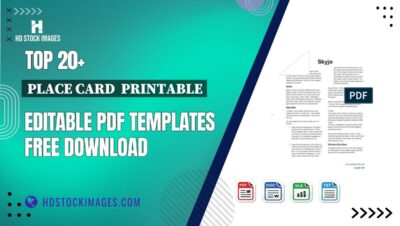In the world of digital content creation, having the right tools can make all the difference. Two platforms that often come up in discussions are Storyblock and Storyblocks. While their names are similar, they serve different purposes and audiences. Storyblock is primarily a headless content management system (CMS) that allows users to create and manage content seamlessly across various platforms. On the other hand, Storyblocks is a subscription service that provides stock video, audio, and images, catering to creators looking for high-quality media assets. Let’s dive deeper into the key features of Storyblock!
Key Features of Storyblock
Storyblock offers a plethora of features designed to enhance the content creation process. Here are some of the standout functionalities:
- Headless CMS: Storyblock operates as a headless CMS, which means that it separates the content from the presentation layer. This allows developers to use any front-end framework they prefer while ensuring that content remains centralized and easily manageable.
- Real-time Collaboration: With Storyblock, teams can collaborate in real-time. Multiple users can work on a project simultaneously, making it easier to brainstorm and implement changes without the hassle of version control issues.
- Visual Editor: One of the standout features is the intuitive visual editor. It allows content creators to see how their content looks in real-time, enabling them to make adjustments on the fly. This feature is especially helpful for non-technical users who may feel overwhelmed by traditional coding.
- Content Blocks: Storyblock uses a modular approach with reusable content blocks. This means once you create a content block, you can reuse it across different pages and projects, saving time and maintaining consistency.
Additionally, Storyblock supports multiple languages, making it an excellent choice for businesses that operate globally. This feature ensures that your content can reach diverse audiences without the need for extensive adjustments.
Another significant advantage is the robust API. Storyblock's API allows for seamless integration with various third-party applications, enhancing its functionality and allowing for tailored solutions that meet specific business needs.
In summary, Storyblock stands out with its headless architecture, collaborative features, and user-friendly interface. Whether you're a developer looking for flexibility or a content creator wanting an easy-to-use platform, Storyblock has something to offer. Stay tuned for a closer look at Storyblocks and how it differs from its counterpart!
Also Read This: How to Use Storyblocks After Effects Templates in Your Video Edits
3. Key Features of Storyblocks
Storyblocks is a powerful platform designed specifically for creators looking for quality stock media. Here are some of its standout features:
- Unlimited Downloads: With a subscription plan, users can download an unlimited number of assets, including videos, images, and audio tracks. This is fantastic for frequent content creators who need a diverse library without worrying about extra costs.
- Broad Library Selection: Storyblocks boasts an extensive collection of over a million assets. Whether you're in need of high-definition stock videos or beautiful images, you're likely to find precisely what you need.
- 3D and After Effects Templates: For those who dive deeper into video editing, Storyblocks offers a range of templates for After Effects and 3D models, making it easier for creators to integrate complex elements into their projects.
- Flexible Licensing Options: Storyblocks provides clear and straightforward licensing, ensuring that creators can use their assets across various platforms without fear of copyright issues.
- User-Friendly Interface: The platform is designed for ease of use, allowing users to quickly search for and locate the assets they need, thanks to its intuitive navigation and advanced filtering options.
These features make Storyblocks a versatile option for video producers, marketers, and social media managers alike who need high-quality content without the hassle of complex licensing and high costs.
Also Read This: Do Storyblocks After Effects Templates Work in DaVinci Resolve?
4. Comparative Analysis of Storyblock and Storyblocks
While the names might sound similar, Storyblock and Storyblocks serve different purposes and audiences. Let’s break down their key differences:
| Feature | Storyblocks | Storyblock |
|---|---|---|
| Target Audience | Content creators and marketers needing stock media. | Developers and businesses looking for headless CMS solutions. |
| Main Offerings | Stock videos, images, and audio tracks. | API-driven content management system for building websites and applications. |
| Pricing Model | Subscription-based with unlimited downloads. | Custom pricing based on project specifications and needs. |
| Ease of Use | Very user-friendly with a focus on asset discovery. | Requires some technical knowledge to integrate effectively. |
| Content Type | Visual and audio content for creative projects. | Structured content management for applications. |
In summary, if you’re a creator looking for stock media, Storyblocks is your go-to platform. However, if you’re a developer or a business wanting a flexible CMS to manage content across various applications, Storyblock is the right choice. Understanding these differences will help you select the platform that best meets your needs.
Also Read This: How to Edit Storyblocks Video Templates to Suit Your Style
5. Use Cases for Storyblock
Storyblock is a powerful headless content management system (CMS) that offers flexibility and efficiency in managing digital content. Here are some use cases where Storyblock truly shines:
- Multi-channel Publishing: Companies that need to distribute content across various platforms, such as websites, mobile apps, and social media, can benefit greatly from Storyblock’s structured content. For instance, a retail brand might use Storyblock to create product descriptions that can be easily adapted for their online store, mobile app, and social media campaigns.
- Collaboration Across Teams: Storyblock allows different teams—marketing, development, and design—to collaborate seamlessly. A team working on a new product launch can use Storyblock to draft, review, and publish content in real-time, ensuring everyone is on the same page.
- Dynamic Content Management: For organizations that require frequent updates to content, such as news websites or blogs, Storyblock’s API-driven approach allows for quick content changes without needing a complete overhaul. A news outlet could utilize Storyblock to ensure their latest headlines and articles are always current and engaging.
- Localization and Personalization: Brands operating in multiple regions can use Storyblock to tailor content for specific audiences. For instance, a global travel agency could create unique landing pages in different languages that cater to local travelers’ preferences.
- Integration with E-commerce: E-commerce businesses can integrate Storyblock with their online stores to enhance product storytelling. A fashion retailer might use Storyblock to create immersive content around product launches, showcasing different styles and collections through rich media.
In summary, Storyblock is an excellent choice for organizations needing a robust, flexible, and collaborative platform for managing their digital content across various channels.
Also Read This: How to Download Adobe After Effects Templates from Storyblocks
6. Use Cases for Storyblocks
Storyblocks, on the other hand, is a subscription-based stock media platform focusing on providing high-quality video, audio, and images. Here are some common use cases where Storyblocks can be a game-changer:
- Content Creation for Businesses: Companies that produce marketing videos, advertisements, or social media content can leverage Storyblocks to access vast libraries of stock footage. For example, a small business producing a promotional video can find relevant clips that fit their theme without the need for a large production budget.
- Enhancing Video Projects: Filmmakers and video editors can use Storyblocks to find supplementary footage that enhances their projects. If a filmmaker is working on a documentary about nature, they can find stunning aerial shots and time-lapse videos of landscapes that complement their narrative.
- Podcast and Audio Content: For podcasters, Storyblocks provides a variety of sound effects and music tracks that can elevate audio quality. A podcast about travel might incorporate ambient sounds from different locations to create an immersive experience for listeners.
- Creative Projects and Tutorials: Educators and content creators can source visual aids from Storyblocks for instructional videos. For instance, a cooking channel could use stock footage to demonstrate techniques, making their content more engaging and informative.
- Cost-Effective Marketing Solutions: Startups and entrepreneurs can use Storyblocks to create professional-looking marketing materials without breaking the bank. A startup launching a new app can produce an engaging explainer video using stock assets, saving time and resources.
In conclusion, Storyblocks caters to anyone needing high-quality stock media for a variety of creative projects, making it an invaluable resource for marketers, creators, and businesses alike.
Also Read This: How to Download Adobe After Effects Templates from Storyblocks
7. Pricing Comparisons
When choosing between Storyblock and Storyblocks, pricing is often a significant factor. Both platforms offer different pricing structures that cater to various needs, so it's essential to break them down to see which might suit you best.
Storyblock Pricing: Storyblock utilizes a subscription model that varies based on the size of your team and the features you need. They offer several tiers:
- Starter Plan: Perfect for small teams or individual projects, starting at around $99/month. It includes basic features and access to their API.
- Regular Plan: Aimed at growing teams, priced at about $399/month, which provides additional components and user roles.
- Enterprise Plan: Tailored for larger organizations with custom pricing based on specific requirements. This includes advanced features, personalized support, and more.
Storyblocks Pricing: Storyblocks takes a different approach with an all-you-can-download subscription model. Here’s how their pricing typically breaks down:
- Video Subscription: Starting at $149/year, this plan gives unlimited downloads of video content, which is fantastic for creators who need a steady stream of visuals.
- Audio Subscription: Priced around $149/year as well, this plan provides access to a robust library of sound effects and music tracks.
- Unlimited Everything Bundle: For those who want it all, this bundle is priced at approximately $299/year, offering unlimited downloads across both video and audio libraries.
In comparing the two, if you’re primarily focused on content creation and need stock assets, Storyblocks can be more cost-effective. However, if you’re looking for a comprehensive content management system with a focus on managing and creating your own content, Storyblock may justify the higher price with its robust features.
8. User Experience and Customer Support
User experience is crucial when selecting between Storyblock and Storyblocks, as it can significantly influence your productivity and satisfaction with the platform.
Storyblock User Experience: Storyblock is designed with developers and marketers in mind. Its interface is user-friendly and features a drag-and-drop editor that makes it easy to build websites without extensive coding knowledge. The modular approach allows users to create reusable components, which can save time and enhance consistency across projects.
However, some users have noted that the initial learning curve can be steep, especially for those unfamiliar with headless CMS concepts. Fortunately, Storyblock offers a wealth of documentation, tutorials, and community support to help users get up to speed.
Customer Support: Storyblock shines when it comes to customer support. They provide multiple channels for assistance, including email support, chat, and a dedicated support team for enterprise users. User feedback often praises their responsiveness and helpfulness, which can make a big difference when you encounter issues.
Storyblocks User Experience: On the other hand, Storyblocks focuses primarily on user-friendliness. Their platform is intuitive, allowing users to quickly search for and download assets. The design is straightforward, making it easy for creators to find exactly what they need without unnecessary complications.
Customer Support: Storyblocks also offers solid customer support, including a help center with articles and FAQs. Users can reach out via email or chat for more direct assistance. While some users have reported delays in response times during peak periods, many find their support staff knowledgeable and eager to help.
Ultimately, both platforms provide good user experiences but cater to slightly different audiences. If you value a structured CMS experience, Storyblock might be your go-to. If you prefer quick access to multimedia assets, Storyblocks could be more suited to your needs.

 admin
admin








